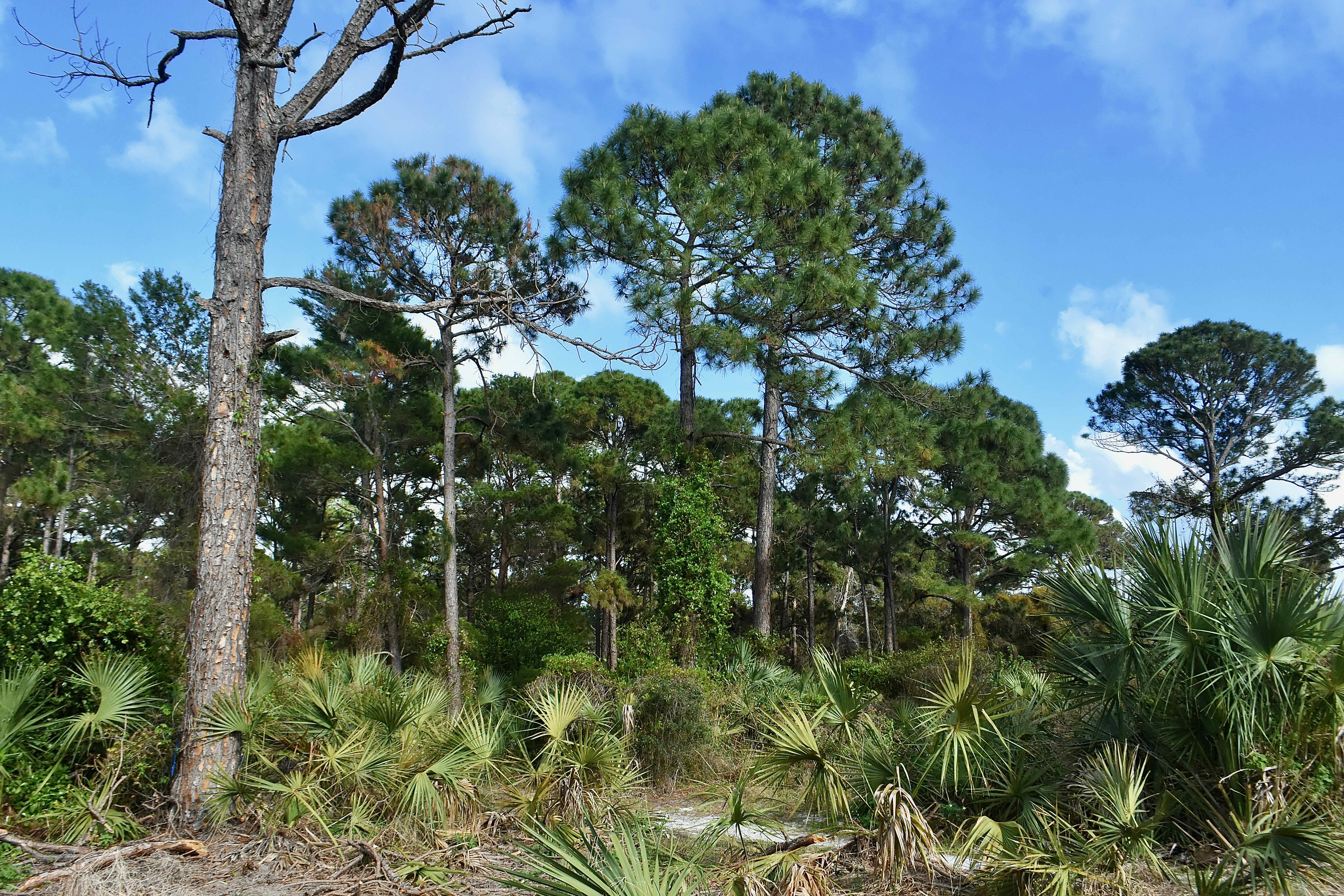Seacrest Scrub Natural Area is mostly scrubby flatwoods, and scrubby flatwoods in coastal areas tend to be made up mostly, if not entirely, of sand pines. Much of the flatwoods at Seacrest is dominated by slash pines, instead, particularly the western half. Why? We've pondered that question every time we've visited Seacrest, trying to find some natural explanation for this oddity but coming up blank. The answer is in the property's history. The eastern portion of natural area was cleared for farming at the turn of the 20th century, specifically for growing pineapples until the industry collapsed under the weight of a fungal disease, cheap imports and a hard freeze in the winter of 1917-18. Some farming might have taken place into the 1920s, but after that the land was left to its own devices and revegetated. Sand pines need the heat from a fire in order for their cones to open and release their seeds. Slash pines don't need fire, so they had the advantage in colonizing the area. The result is a landscape typical of more inland places. The two species are easy to tell apart: slash pines have much longer needles than their sand pine cousins, their bark is much coarser and they drop their lower branches, creating a lollypop look. Next photo.

